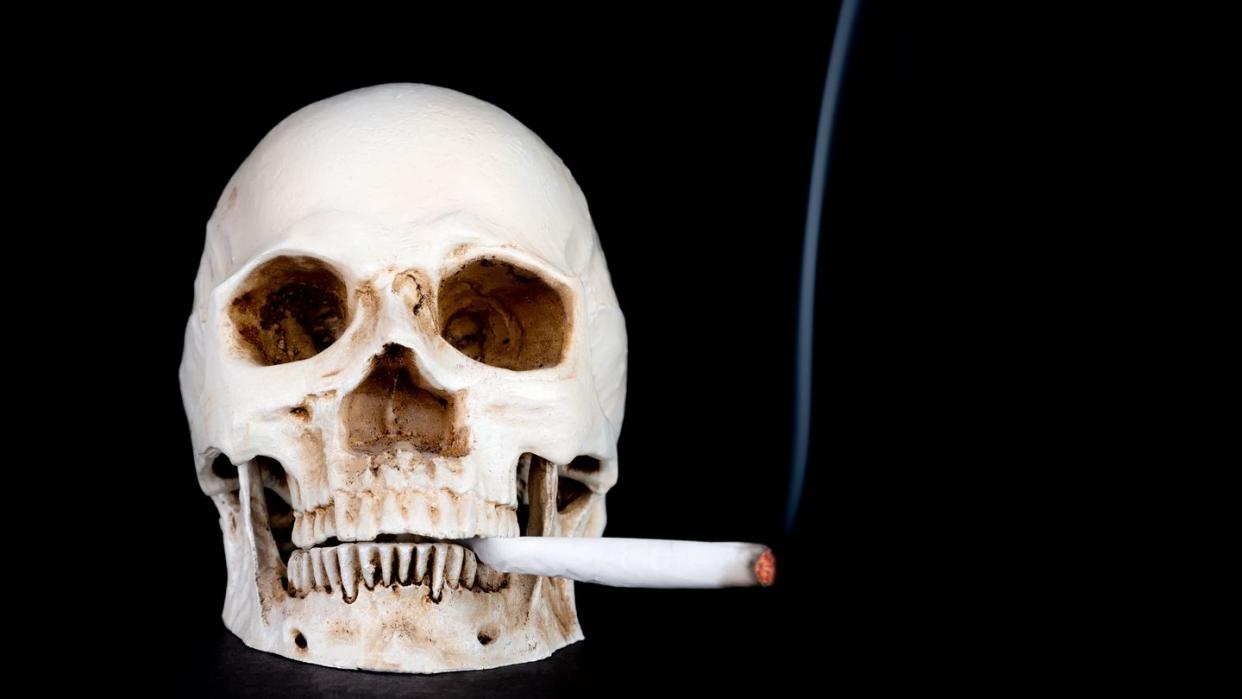An Ancient Tomb Revealed a Potent Surprise: 17th Century Bones Contained THC

"Hearst Magazines and Yahoo may earn commission or revenue on some items through these links."
Researchers studied bones in an Italian medical crypt from the 17th century, and discovered the presence of cannabis.
Since cannabis was not a prescribed medical treatment at that time in that hospital, the team hypothesizes that the use was recreational.
While stories of cannabis use stretch to well before the 17th century, this is the first physical evidence showing the plant’s use.
Weed was popular enough centuries ago that it became part of peoples’ bones. And now there’s scientific research to prove it. Researchers in Italy recently detected traces of Delta-9 THC and CBD—both from the cannabis plant—in bone samples dating back to the 1600s.
“This study reports the first physical evidence of cannabis use in Modern Age in Italy, but also in Europe,” wrote the authors of the study detailing this discovery. The study was published in the Journal of Archaeological Science, and chronicles the group’s toxicological analyses on human remains that were located in a Milan hospital crypt.
The team performed these analyses using a mass spectrometer on nine human remains from the Ca’ Granda Crypt—located under a church next door to a key hospital in Milan—with the goal of identifying individual chemical compounds. They carbon dated the bones to the 1600s, and found cannabis in two of the nine bones studied. The presence of the chemical seemed to have no correlation with demographic, as the bones of both a woman aged about 50 and a teenage boy were found to have DTC and CBD.
“The presence of these two alkaloids evidences the use of the cannabis plant in the Italian population during the 17thcentury,” the authors wrote. After investigating the archived documentation of the hospital, the team found that cannabis was not administered as a medical treatment during the 1600s. “Thus, we hypothesize that the subjects under investigation used cannabis as a recreational substance,” the study said. The researchers caution, however, that they can’t rule out other sources of exposure related to medical treatments outside of the hospital.
While the use of cannabis is well chronicled back to the Middle Ages in Europe, cannabis fell out of favor as a medical option in 1484, according to the CBC, when Pope Innocent VIII labeled it an “unholy sacrament.” But that doesn’t mean that cannabis wasn’t a popular choice outside of medical settings.
“We know that cannabis has been used in the past, but this is the first study ever to find traces of it in human bones,” says Gaia Giordano, biologist and doctoral student at the University of Milan’s Laboratory of Forensic Anthropology and Odontology and Laboratory of Toxicological Investigation and a study author, according to the CBC. “This is an important finding, because there are very few laboratories that can examine bones to find traces of drugs.”
The lab in Milan certainly pulled it off. “Molecules of medicinal plants can be detected by toxicological analysis even centuries after the death of an individual,” Giordano says, according to the New Scientist.
Even amidst a ban on cannabis, Italy used hemp aplenty in commerce, so access to the plant was part of everyday life for those making ropes, textiles, feed for livestock, and paper (and, yes, the sails on ships used by Christopher Columbus).
“Life was especially tough in Milan in the 17th century,” Domenico di Candia, archaeotoxicologist and lead author on the study, told Italian newspaper Corriere della Sera. “Famine, disease, poverty, and almost nonexistent hygiene were widespread.” With cannabis proven as a drug of choice in the day, researchers may now begin investigating what other substances were present in the 17th century bones.
You Might Also Like

